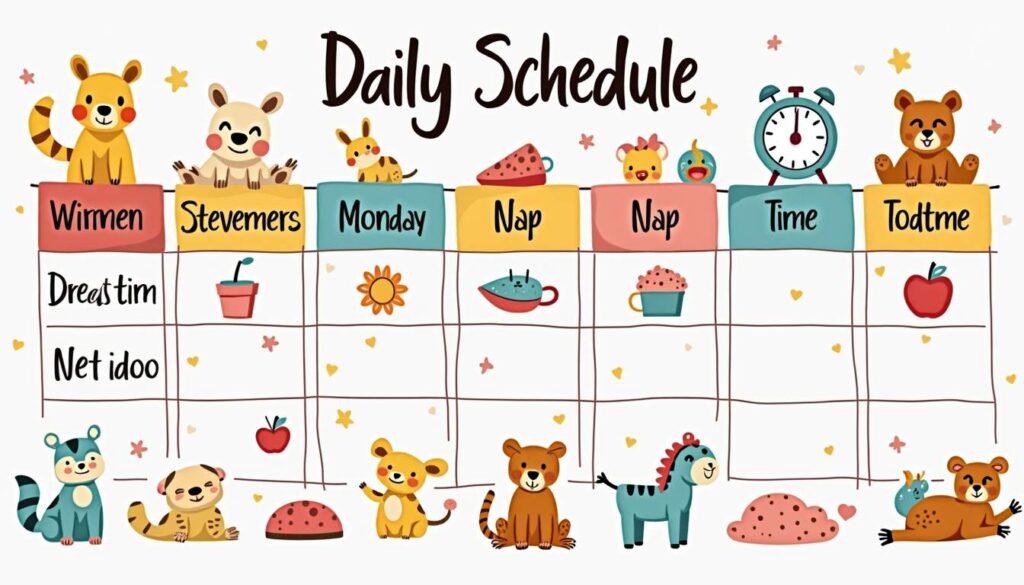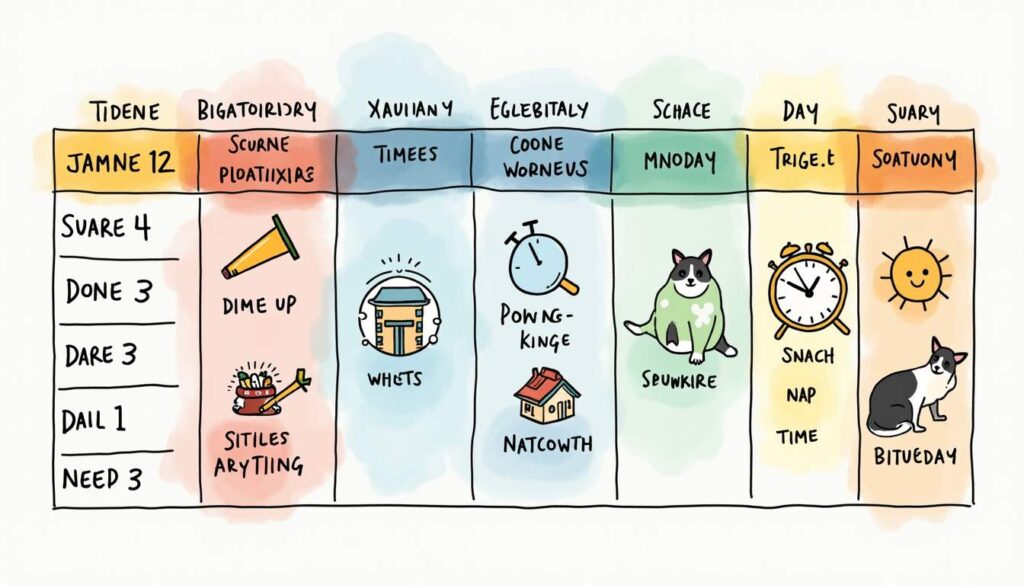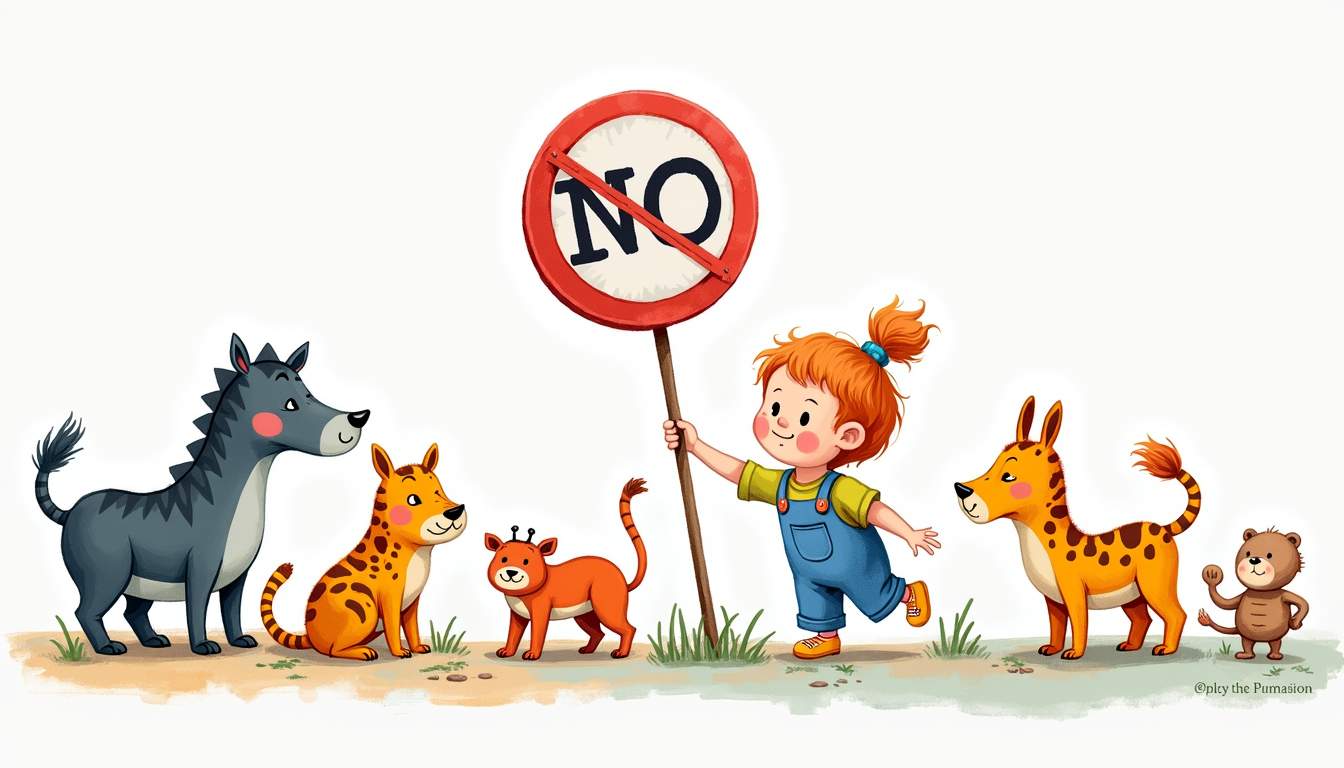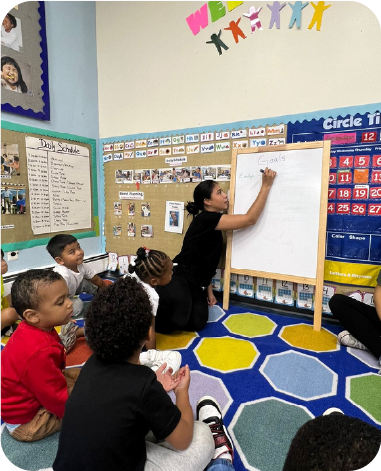Establishing a routine for toddlers is a crucial aspect of parenting that can significantly impact their development, behavior, and overall well-being. A well-structured routine provides a sense of security and predictability, which is essential for young children who thrive on consistency. This article will explore effective strategies for creating a routine that works for toddlers, ensuring that both parents and children can enjoy the benefits of a well-organized day.
Understanding the Importance of Routine
Routines are more than just a series of scheduled activities; they are vital for a toddler’s emotional and cognitive development. Children at this age are learning about the world around them, and a predictable routine helps them understand what to expect next. Establishing a daily rhythm not only aids in their comprehension of time but also provides a framework within which they can thrive, as they begin to make sense of their experiences and interactions.

Emotional Security
When toddlers know what to expect throughout the day, they feel more secure. This emotional stability can reduce anxiety and help them cope with transitions, such as moving from playtime to mealtime. A consistent routine fosters a sense of safety, allowing toddlers to explore their environment with confidence. Moreover, the predictability of routines can help children manage their emotions better, as they learn to anticipate changes and prepare for them. For instance, a bedtime routine that includes reading a story or singing a lullaby can signal to a child that it is time to wind down, thus easing the transition into sleep.
Development of Independence
Routines can also encourage independence in toddlers. By involving them in daily tasks, such as picking out their clothes or helping with meal preparation, children learn to take responsibility for their actions. This empowerment is essential for building self-esteem and confidence. Furthermore, as toddlers engage in these activities, they develop fine motor skills and problem-solving abilities. For example, when a child chooses their outfit, they not only express their individuality but also learn about matching colors and understanding weather appropriateness. Such small decisions contribute significantly to their growing sense of autonomy and self-reliance.
Would you like to check out one of the top-rated childcares in New Jersey? Schedule a tour with us!
Additionally, routines can serve as a powerful tool for teaching life skills. Regularly scheduled activities, like setting the table or cleaning up toys, instill a sense of accountability and teamwork. As toddlers participate in these tasks, they begin to understand the importance of contributing to their home environment, fostering a sense of belonging and community within the family. This collaborative effort not only strengthens family bonds but also teaches children the value of cooperation and shared responsibilities, laying the groundwork for their future interactions with peers and adults alike.
Key Elements of an Effective Routine
Creating a routine that works for toddlers involves several key elements. These components should be tailored to fit the unique needs of each child while maintaining a structure that is easy for parents to follow.
Consistency
Consistency is the cornerstone of any effective routine. Toddlers thrive on repetition, and having a predictable schedule helps them feel secure. Parents should aim to keep wake-up times, meal times, and bedtimes consistent, even on weekends. This consistency helps regulate a child’s internal clock, making transitions smoother. For instance, a consistent bedtime routine that includes calming activities such as reading or singing can signal to a toddler that it’s time to wind down, making it easier for them to settle into sleep.
Flexibility
While consistency is important, flexibility is equally crucial. Toddlers are unpredictable, and their needs can change from day to day. Parents should be prepared to adjust the routine as necessary, whether it’s due to a change in mood, unexpected events, or developmental milestones. Finding a balance between structure and flexibility is key to a successful routine. For example, if a toddler is particularly tired one day, it may be beneficial to shorten playtime or allow for a nap, ensuring that their emotional and physical needs are prioritized over strict adherence to the schedule.
Incorporating Play and Learning
Play is an essential part of a toddler’s routine. Incorporating educational activities into playtime can enhance learning while keeping the experience enjoyable. Parents can include activities that promote fine motor skills, language development, and social interactions. This not only makes the routine more engaging but also supports cognitive growth. For instance, simple games like sorting colors or counting objects during playtime can introduce foundational math concepts, while storytelling can enhance vocabulary and comprehension skills. Additionally, outdoor play can provide opportunities for exploration and physical development, allowing toddlers to connect with their environment in a meaningful way.
Routine Review and Adjustment
Regularly reviewing and adjusting the routine is another vital aspect of maintaining an effective schedule. As toddlers grow, their interests and needs evolve, and what worked last month may not be suitable now. Parents should take time to reflect on the current routine, considering what aspects are successful and which may need modification. Engaging toddlers in this process, even at a young age, can foster a sense of ownership and cooperation. For example, allowing them to choose between two different activities for playtime can empower them and make the routine feel more personalized.
Creating a Daily Schedule
A well-structured daily schedule is essential for implementing a routine that works for toddlers. Here’s a general outline that can be adapted based on individual needs.
Morning Routine
The morning routine sets the tone for the day. It typically includes waking up, getting dressed, having breakfast, and engaging in a brief activity. Starting the day with a consistent morning routine helps toddlers transition from sleep to wakefulness smoothly.
Consider adding a fun element to the morning, such as a dance party or a favorite song. This can make waking up more enjoyable and motivate toddlers to get out of bed. Additionally, allowing toddlers to choose their outfits can foster independence and make them feel more involved in their morning routine.
Afternoon Activities
After a busy morning, toddlers often benefit from a mix of structured and unstructured play in the afternoon. This can include outdoor play, arts and crafts, or sensory activities. Providing a variety of options allows toddlers to explore their interests and develop new skills.
Incorporating quiet time or nap time into the afternoon is also crucial. Toddlers need rest to recharge, and a designated quiet time can help them unwind and prepare for the rest of the day. This break can also provide parents with a moment to relax or catch up on tasks.
Evening Routine
The evening routine is an opportunity to wind down and prepare for bedtime. This can include dinner, bath time, and reading stories. Establishing a calming bedtime routine signals to toddlers that it’s time to sleep, making the transition easier.
Parents can enhance the bedtime experience by creating a cozy environment, such as dimming the lights and playing soft music. Engaging in calming activities, like reading or singing lullabies, can help toddlers feel secure and relaxed before sleep.
Involving Toddlers in the Routine
Involving toddlers in their routine can enhance their sense of ownership and responsibility. Here are some strategies to encourage participation.
Choice and Autonomy
Offering choices is an effective way to involve toddlers in their routine. For example, parents can let them choose between two outfits or select a book for bedtime. This not only empowers toddlers but also helps them develop decision-making skills.
Visual Schedules
Visual schedules can be a helpful tool for toddlers to understand their daily routine. Using pictures or icons to represent different activities can make it easier for children to follow along. Parents can create a chart that outlines the day’s events, allowing toddlers to see what comes next.
Positive Reinforcement
Positive reinforcement is a powerful motivator for toddlers. Praising them for following the routine or completing tasks can encourage them to continue participating. Simple rewards, such as stickers or extra playtime, can also be effective in reinforcing desired behaviors.
Handling Disruptions and Changes
Life is unpredictable, and disruptions to the routine are bound to happen. Whether it’s a family event, illness, or a change in schedule, being prepared for these situations can help minimize stress for both parents and toddlers.

Communicating Changes
When changes to the routine are necessary, clear communication is essential. Explaining the situation to toddlers in simple terms can help them understand what to expect. For example, if a family event will disrupt nap time, parents can discuss the change in advance and reassure toddlers that they will still have time to rest later.
Staying Calm and Flexible
Maintaining a calm demeanor during disruptions is crucial. Toddlers are sensitive to their parents’ emotions, and staying composed can help them feel more secure. Flexibility is also important; adapting to changes without frustration can model resilience for toddlers.
Re-establishing the Routine
After a disruption, it’s important to re-establish the routine as soon as possible. Returning to familiar activities can help toddlers regain their sense of security. Parents should aim to restore consistency while allowing for some adjustments based on the recent changes.
Tips for Successful Routine Implementation
Implementing a routine for toddlers can be challenging, but with the right strategies, it can also be rewarding. Here are some tips to ensure success.
Start Small
When introducing a new routine, it’s best to start small. Focus on one or two key elements, such as a consistent bedtime or mealtime. Gradually expand the routine as toddlers become accustomed to the changes. This incremental approach can prevent overwhelm for both parents and children.
Be Patient
Building a routine takes time and patience. Toddlers may resist changes initially, but consistency and encouragement can help them adapt. Parents should be prepared for setbacks and remain patient as their child adjusts to the new routine.
Seek Support
Parents don’t have to navigate this journey alone. Seeking support from other parents, caregivers, or professionals can provide valuable insights and encouragement. Online parenting communities or local support groups can be excellent resources for sharing experiences and strategies.
Would you like to check out one of the top-rated childcares in New Jersey? Schedule a tour with us!
Creating a routine that works for toddlers is an ongoing process that requires flexibility, patience, and creativity. By understanding the importance of routine, incorporating key elements, and involving toddlers in the process, parents can establish a structure that benefits both their children and themselves. Ultimately, a well-designed routine can foster emotional security, independence, and a love for learning, setting the stage for a positive and enriching childhood.

As families navigate the challenges of daily life, a thoughtfully crafted routine can be a source of comfort and stability. By prioritizing consistency while remaining adaptable to change, parents can create an environment where toddlers can thrive and grow.











